




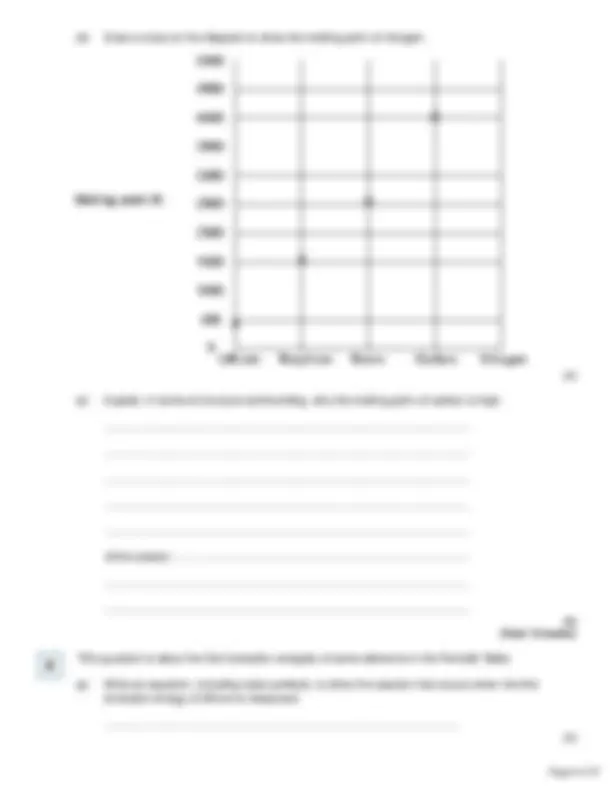


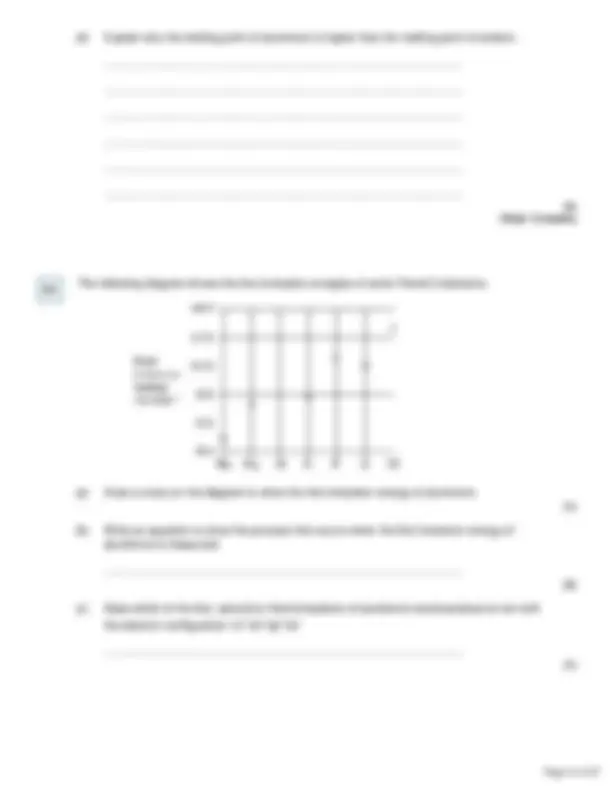




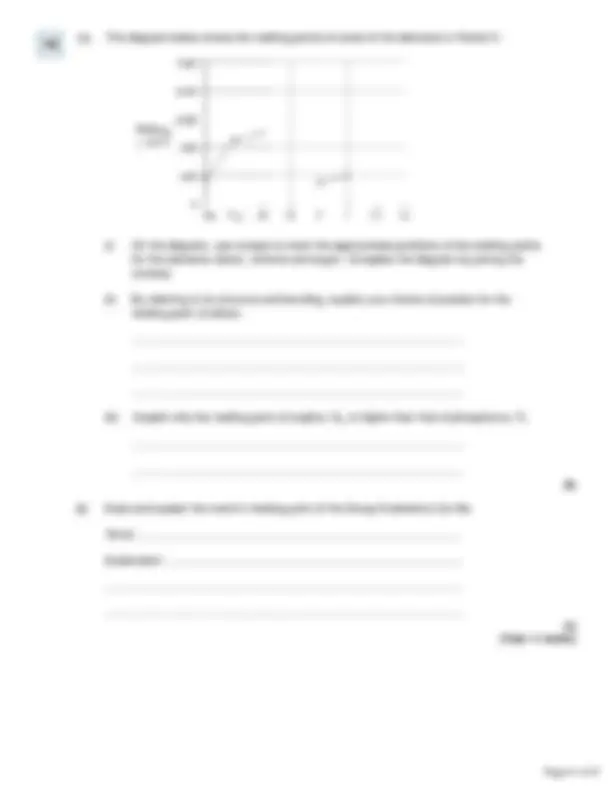



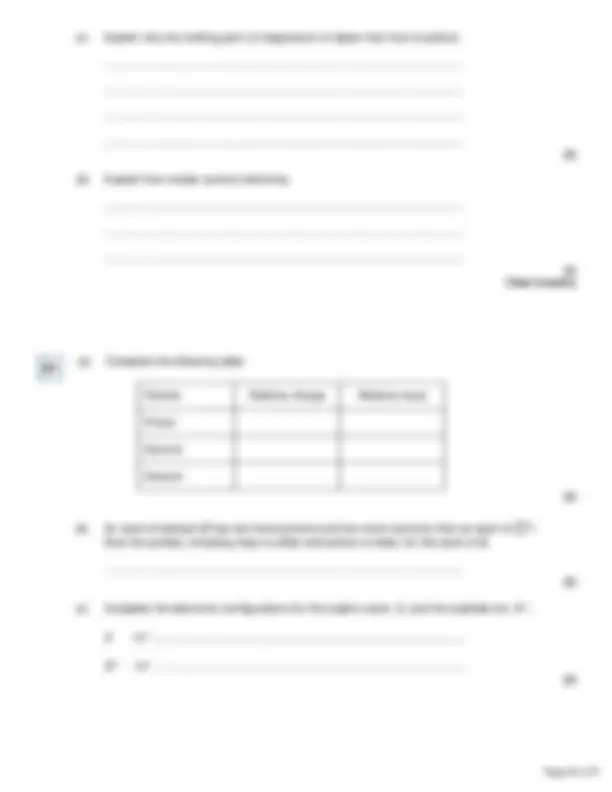





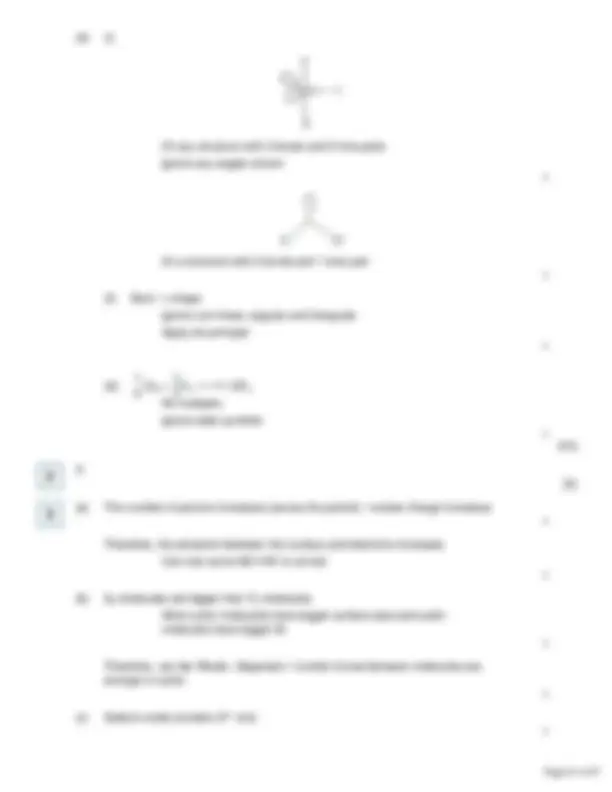
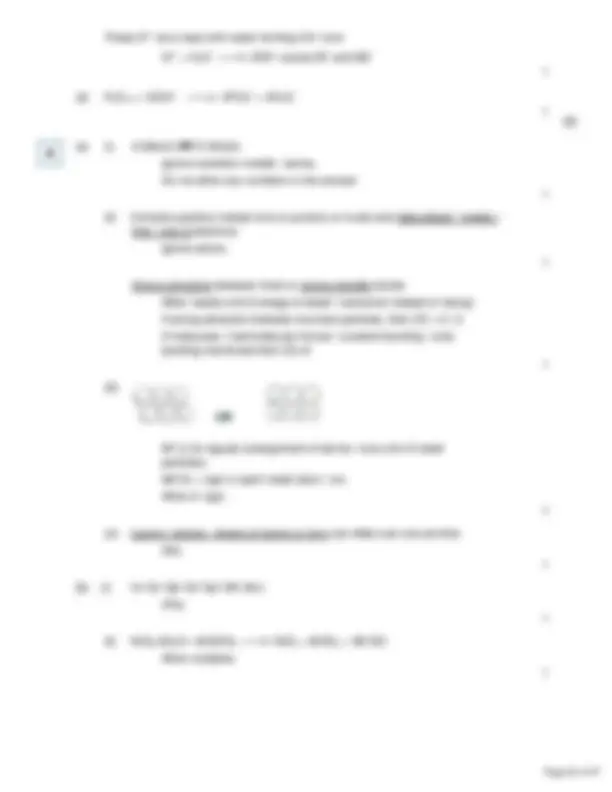

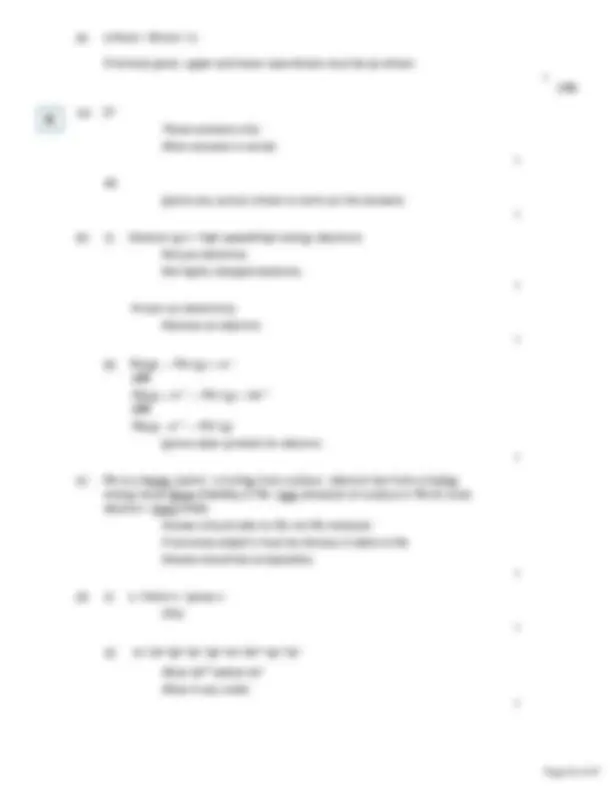

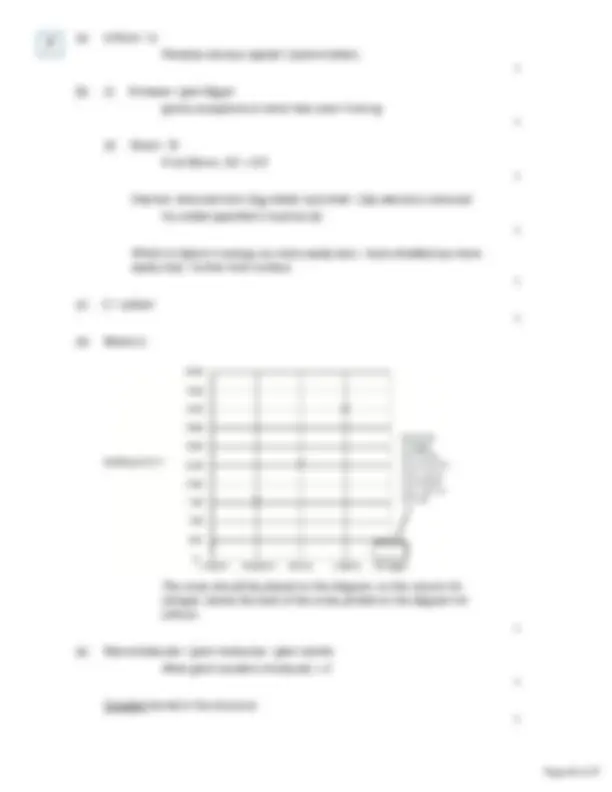

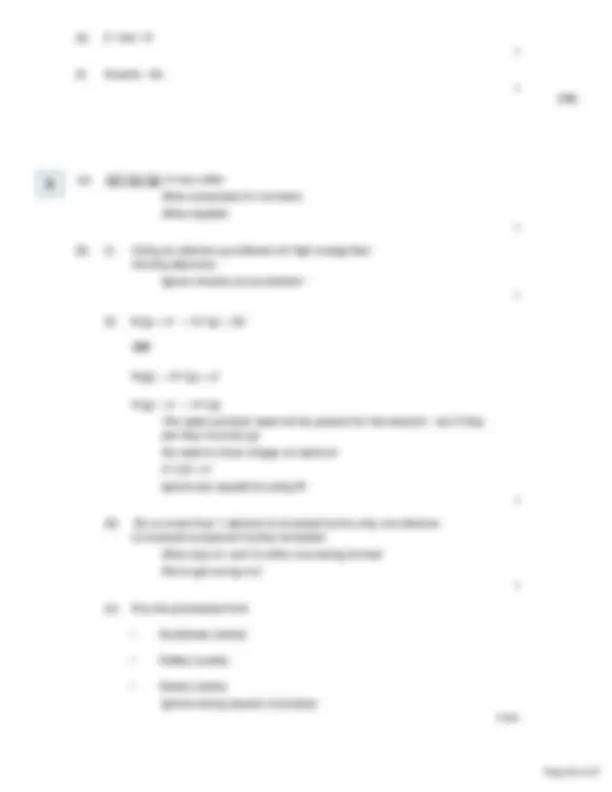



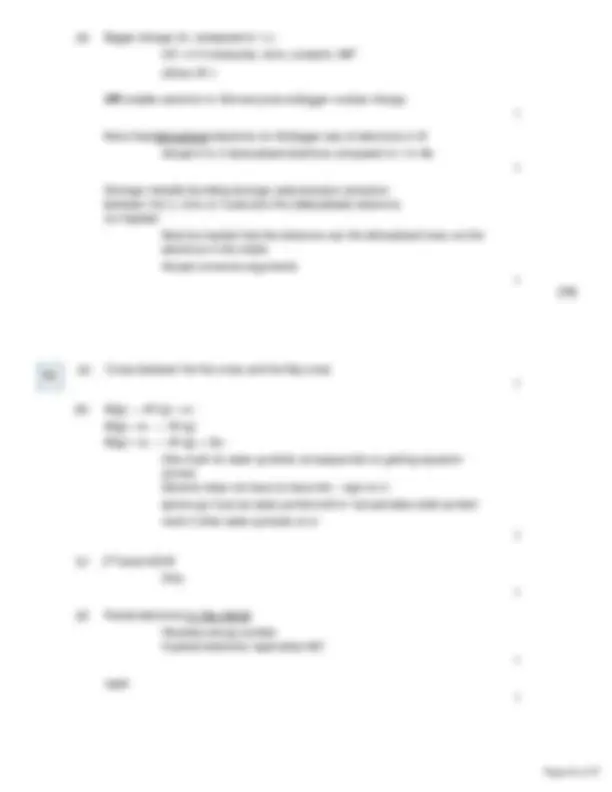

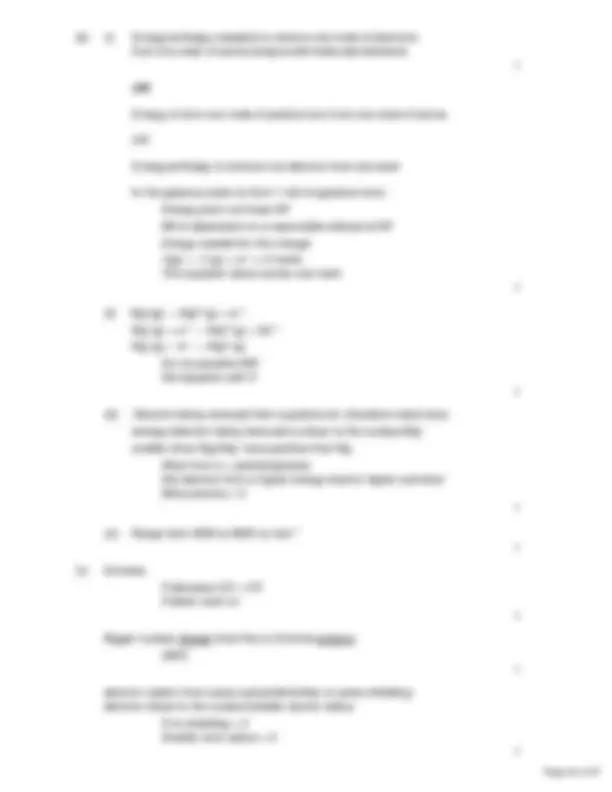
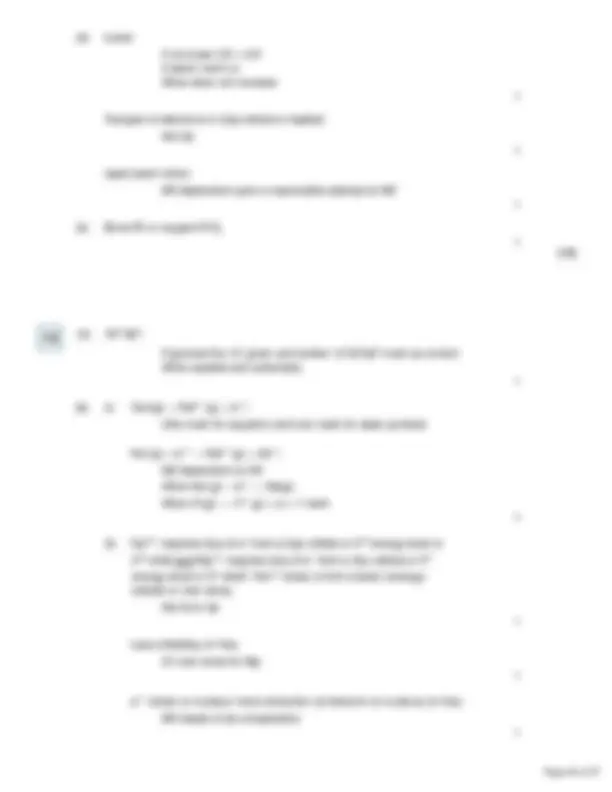
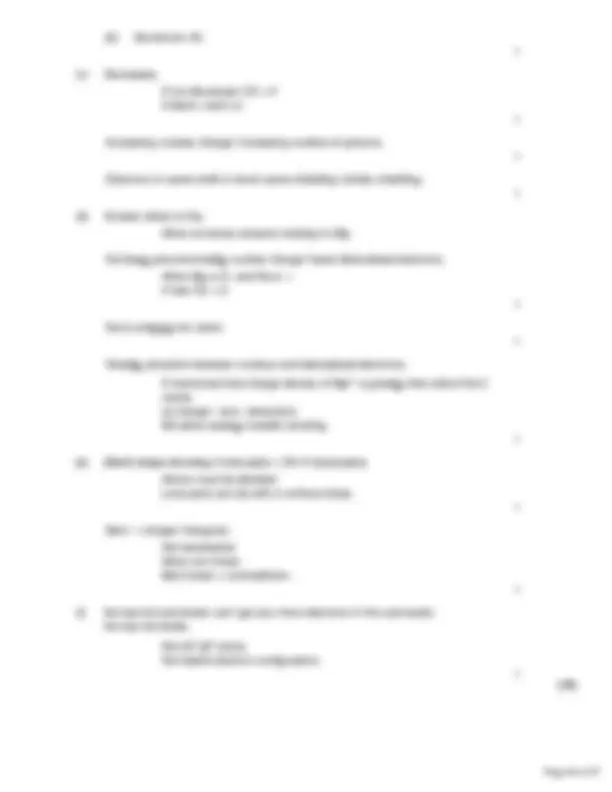


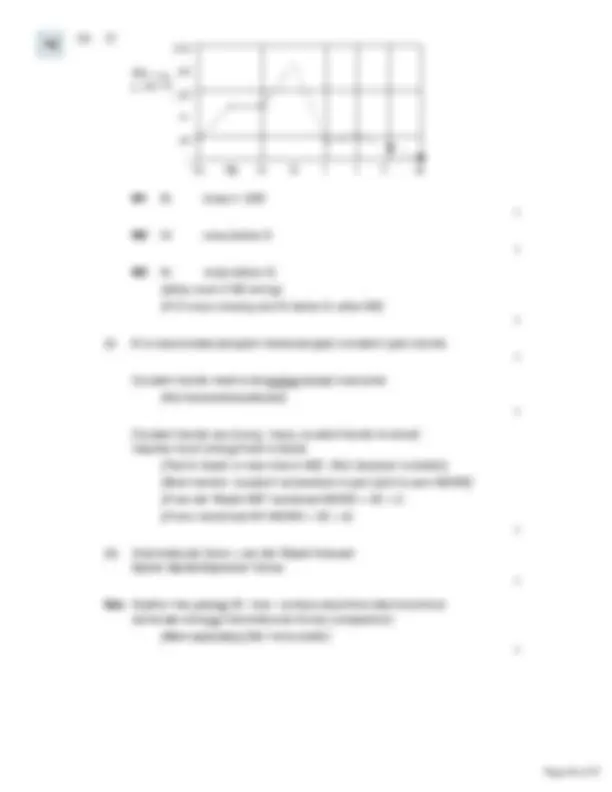



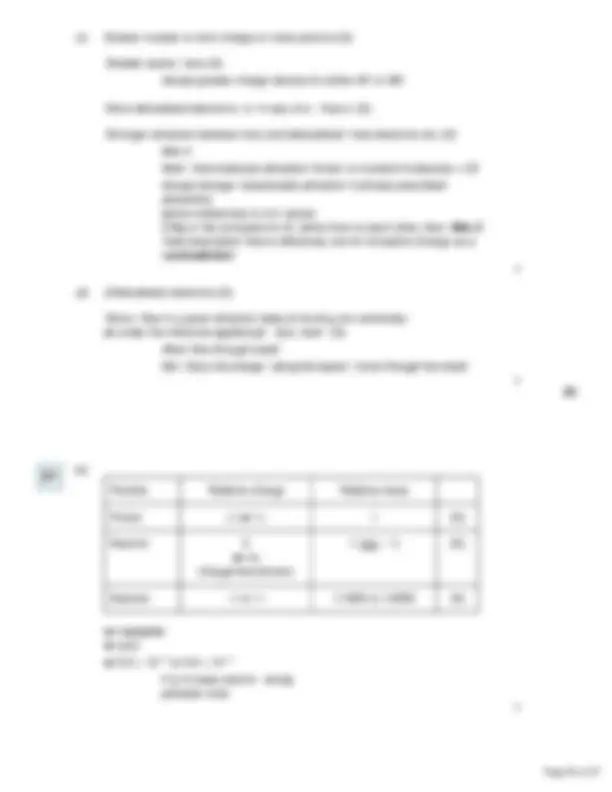
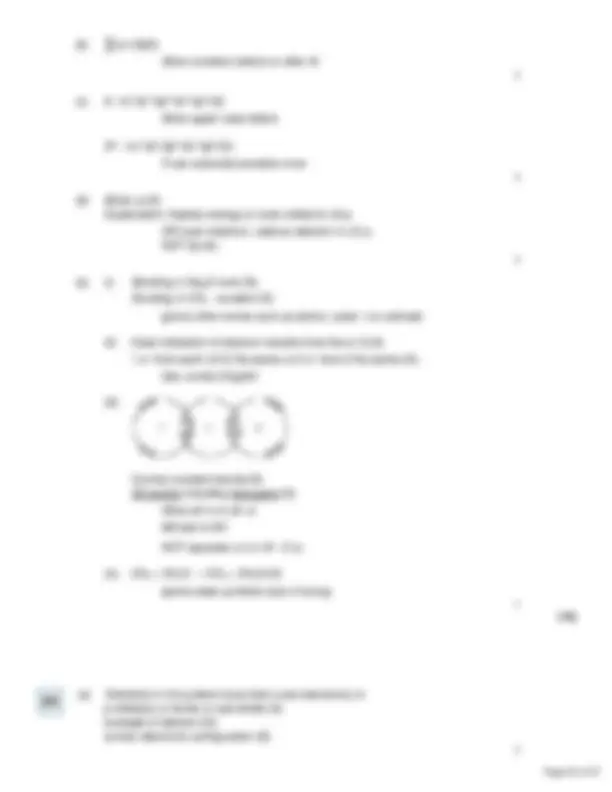

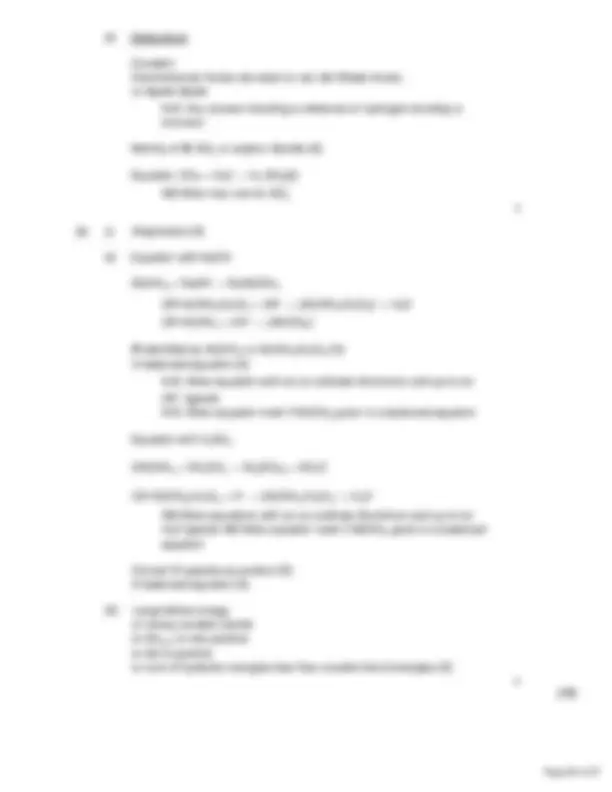



Study with the several resources on Docsity

Earn points by helping other students or get them with a premium plan


Prepare for your exams
Study with the several resources on Docsity

Earn points to download
Earn points by helping other students or get them with a premium plan
Community
Ask the community for help and clear up your study doubts
Discover the best universities in your country according to Docsity users
Free resources
Download our free guides on studying techniques, anxiety management strategies, and thesis advice from Docsity tutors
Instructions for drawing the shapes of ClF3 and CCl2 molecules using electron pair repulsion concepts, as well as explanations for ionization energies of Cl, S, and Na. It includes information on the effects of nuclear charge, shielding, and the arrangement of electrons on ionization energies.
Typology: Lecture notes
1 / 57

This page cannot be seen from the preview
Don't miss anything!


















































This question is about the elements in Period 3 of the Periodic Table. (a) State the element in Period 3 that has the highest melting point. Explain your answer. Element .......................................................................................................... Explanation .................................................................................................... ........................................................................................................................ ........................................................................................................................ ........................................................................................................................ ........................................................................................................................ (3)
(b) State the element in Period 3 that has the highest first ionisation energy. Explain your answer. Element .......................................................................................................... Explanation .................................................................................................... ........................................................................................................................ ........................................................................................................................ ........................................................................................................................ ........................................................................................................................ (3) (c) Suggest the element in Period 3 that has the highest electronegativity value. ........................................................................................................................ (1) (d) Chlorine is a Period 3 element. Chlorine forms the molecules ClF 3 and CCl 2 (i) Use your understanding of electron pair repulsion to draw the shape of ClF 3 and the shape of CCl 2 Include any lone pairs of electrons that influence the shape. Shape of ClF 3 Shape of CCl 2 (2) (ii) Name the shape of CCl 2 ............................................................................................................... (1)
(iii) Write an equation to show the formation of one mole of ClF 3 from its elements. ............................................................................................................... (1) (Total 11 marks) Which of these elements has the highest second ionisation energy? A Na B Mg C Ne D Ar (Total 1 mark)
(a) Explain why the atomic radii of the elements decrease across Period 3 from sodium to chlorine. ........................................................................................................................ ........................................................................................................................ ........................................................................................................................ ........................................................................................................................ ........................................................................................................................ ........................................................................................................................ (2)
(b) Explain why the melting point of sulfur (S 8 ) is greater than that of phosphorus (P 4 ). ........................................................................................................................ ........................................................................................................................ ........................................................................................................................ ........................................................................................................................ ........................................................................................................................ ........................................................................................................................ (2)
(iv) Explain why nickel is ductile (can be stretched into wires). ............................................................................................................... ............................................................................................................... ............................................................................................................... (1) (b) Nickel forms the compound nickel(II) chloride (NiCl 2 ). (i) Give the full electron configuration of the Ni2+^ ion. ............................................................................................................... (1) (ii) Balance the following equation to show how anhydrous nickel(II) chloride can be obtained from the hydrated salt using SOCl 2 Identify one substance that could react with both gaseous products. ......NiCl 2 .6H 2 O(s) + ...... SOCl 2 (g) ......NiCl 2 (s) + ......SO 2 (g) + ......HCl(g) Substance .............................................................................................. (2) (Total 9 marks) The elements in Period 2 show periodic trends. (a) Identify the Period 2 element, from carbon to fluorine, that has the largest atomic radius. Explain your answer. Element ......................................................................................................... Explanation .................................................................................................... ........................................................................................................................ ........................................................................................................................ ........................................................................................................................ (3)
(b) State the general trend in first ionisation energies from carbon to neon. Deduce the element that deviates from this trend and explain why this element deviates from the trend. Trend ............................................................................................................. Element that deviates .................................................................................... Explanation .................................................................................................... ........................................................................................................................ ........................................................................................................................ ........................................................................................................................ (4) (c) Write an equation, including state symbols, for the reaction that occurs when the first ionisation energy of carbon is measured. ........................................................................................................................ (1) (d) Explain why the second ionisation energy of carbon is higher than the first ionisation energy of carbon. ........................................................................................................................ ........................................................................................................................ ........................................................................................................................ ........................................................................................................................ (1) (e) Deduce the element in Period 2, from lithium to neon, that has the highest second ionisation energy. ........................................................................................................................ (1) (Total 10 marks) The element rubidium exists as the isotopes 85 Rb and 87 Rb (a) State the number of protons and the number of neutrons in an atom of the isotope 85 Rb Number of protons ......................................................................................... Number of neutrons ....................................................................................... (2)
(e) A sample of rubidium contains the isotopes 85 Rb and 87 Rb only. The isotope 85 Rb has an abundance 2.5 times greater than that of 87 Rb Calculate the relative atomic mass of rubidium in this sample. Give your answer to one decimal place. ........................................................................................................................ ........................................................................................................................ ........................................................................................................................ ........................................................................................................................ (3) (f) By reference to the relevant part of the mass spectrometer, explain how the abundance of an isotope in a sample of rubidium is determined. Name of relevant part .................................................................................... Explanation .................................................................................................... ........................................................................................................................ ........................................................................................................................ (2) (g) Predict whether an atom of 88 Sr will have an atomic radius that is larger than, smaller than or the same as the atomic radius of 87 Rb. Explain your answer. Atomic radius of 88 Sr compared to 87 Rb ......................................................... Explanation .................................................................................................... ........................................................................................................................ ........................................................................................................................ ........................................................................................................................ (3) (Total 16 marks) Trends in physical properties occur across all Periods in the Periodic Table. This question is about trends in the Period 2 elements from lithium to nitrogen. (a) Identify, from the Period 2 elements lithium to nitrogen, the element that has the largest atomic radius. ........................................................................................................................ (1)
(b) (i) State the general trend in first ionisation energies for the Period 2 elements lithium to nitrogen. ............................................................................................................... (1) (ii) Identify the element that deviates from this general trend, from lithium to nitrogen, and explain your answer. Element ................................................................................................ Explanation ........................................................................................... ............................................................................................................... ............................................................................................................... (Extra space) ........................................................................................ ............................................................................................................... (3) (c) Identify the Period 2 element that has the following successive ionisation energies. First Second Third Fourth Fifth Sixth Ionisation energy / kJ mol-
(1)
(b) State and explain the general trend in first ionisation energies for the Period 3 elements aluminium to argon. Trend .......................................................................................................... Explanation ................................................................................................. ..................................................................................................................... ..................................................................................................................... (Extra space) ............................................................................................... ..................................................................................................................... (3) (c) There is a similar general trend in first ionisation energies for the Period 4 elements gallium to krypton. State how selenium deviates from this general trend and explain your answer. How selenium deviates from this trend ...................................................... Explanation ................................................................................................. ..................................................................................................................... ..................................................................................................................... (Extra space) ................................................................................................ (3) (d) Suggest why the first ionisation energy of krypton is lower than the first ionisation energy of argon. ..................................................................................................................... ..................................................................................................................... ..................................................................................................................... (1) (e) The table below gives the successive ionisation energies of an element. First Second Third Fourth Fifth Ionisation energy / kJ mol–1^590 1150 4940 6480 Deduce the group in the Periodic Table that contains this element. ..................................................................................................................... (1)
(f) Identify the element that has a 5+ ion with an electron configuration of 1s^2 2s^2 2p^6 3s^2 3p^6 3d^10 ..................................................................................................................... (1) (Total 10 marks) Indium is in Group 3 in the Periodic Table and exists as a mixture of the isotopes 113 In and 115 In. (a) Use your understanding of the Periodic Table to complete the electron configuration of indium. 1s^2 2s^2 2p^6 3s^2 3p^6 4s^2 3d^10 4p^6 ........................................................................ (1)
(b) A sample of indium must be ionised before it can be analysed in a mass spectrometer. (i) State what is used to ionise a sample of indium in a mass spectrometer. ............................................................................................................. ............................................................................................................. (1) (ii) Write an equation, including state symbols, for the ionisation of indium that requires the minimum energy. ............................................................................................................. (1) (iii) State why more than the minimum energy is not used to ionise the sample of indium. ............................................................................................................. ............................................................................................................. (1) (iv) Give two reasons why the sample of indium must be ionised. Reason 1 ............................................................................................ Reason 2 ............................................................................................ (2)
The following table gives the melting points of some elements in Period 3. Element Na Al Si P S Melting point / K 371 933 1680 317 392 (a) State the type of structure shown by a crystal of silicon. Explain why the melting point of silicon is very high. ...................................................................................................................... ...................................................................................................................... ...................................................................................................................... ...................................................................................................................... ...................................................................................................................... (3)
(b) State the type of structure shown by crystals of sulfur and phosphorus. Explain why the melting point of sulfur is higher than the melting point of phosphorus. ...................................................................................................................... ...................................................................................................................... ...................................................................................................................... ...................................................................................................................... ...................................................................................................................... (3) (c) Draw a diagram to show how the particles are arranged in aluminium and explain why aluminium is malleable. (You should show a minimum of six aluminium particles arranged in two dimensions.) ...................................................................................................................... ...................................................................................................................... ...................................................................................................................... ...................................................................................................................... ...................................................................................................................... ...................................................................................................................... (3)
(d) Explain why the melting point of aluminium is higher than the melting point of sodium. ...................................................................................................................... ...................................................................................................................... ...................................................................................................................... ...................................................................................................................... ...................................................................................................................... ...................................................................................................................... (3) (Total 12 marks) The following diagram shows the first ionisation energies of some Period 3 elements. (a) Draw a cross on the diagram to show the first ionisation energy of aluminium. (1)
(b) Write an equation to show the process that occurs when the first ionisation energy of aluminium is measured. ...................................................................................................................... (2) (c) State which of the first, second or third ionisations of aluminium would produce an ion with the electron configuration 1s^2 2s^2 2p^6 3s^1 ...................................................................................................................... (1)
(ii) Write an equation, including state symbols, to show the reaction that occurs when the second ionisation energy of magnesium is measured. ............................................................................................................. (1) (iii) Explain why the second ionisation energy of magnesium is greater than the first ionisation energy of magnesium. ............................................................................................................. ............................................................................................................. ............................................................................................................. (1) (iv) Use your understanding of electron arrangement to complete the table by suggesting a value for the third ionisation energy of magnesium. First Second Third Fourth Fifth Ionisation energies of magnesium / kJ mol–^
(1) (c) State and explain the general trend in the first ionisation energies of the Period 3 elements sodium to chlorine. Trend ........................................................................................................... Explanation .................................................................................................. ...................................................................................................................... ...................................................................................................................... (3) (d) State how the element sulfur deviates from the general trend in first ionisation energies across Period 3. Explain your answer. How sulfur deviates from the trend .............................................................. ...................................................................................................................... Explanation .................................................................................................. ...................................................................................................................... ...................................................................................................................... (3)
(e) A general trend exists in the first ionisation energies of the Period 2 elements lithium to fluorine. Identify one element which deviates from this general trend. ...................................................................................................................... (1) (Total 13 marks) (a) Complete the electronic configuration for the sodium ion, Na+ ls^2 ................................................................................................................. (1) (b) (i) Write an equation, including state symbols, to represent the process for which the energy change is the second ionisation energy of sodium. ............................................................................................................. (2)
(ii) Explain why the second ionisation energy of sodium is greater than the second ionisation energy of magnesium. ............................................................................................................. ............................................................................................................. ............................................................................................................. ............................................................................................................. (3) (iii) An element X in Period 3 of the Periodic Table has the following successive ionisation energies. First Second Third Fourth Ionisation energies / kJ mol–1^577 1820 2740 Deduce the identity of element X. ............................................................................................................. (1)
This question is about the elements in Period 3 from Na to P (a) (i) Explain the meaning of the term first ionisation energy. ............................................................................................................. ............................................................................................................. ............................................................................................................. (2)
(ii) State and explain the general trend in first ionisation energies for the elements Na to P Trend ................................................................................................... Explanation ......................................................................................... ............................................................................................................. ............................................................................................................. (3) (iii) State which one of the elements from Na to P deviates from this general trend and explain why this occurs. Trend .................................................................................................. Explanation ......................................................................................... ............................................................................................................. ............................................................................................................. (3) (b) State which one of the elements from Na to P has the highest melting point and explain your answer. Element ....................................................................................................... Explanation .................................................................................................. ...................................................................................................................... ...................................................................................................................... (3) (Total 11 marks)
The elements phosphorus, sulfur, chlorine and argon are in the p block of the Periodic Table. (a) State why these elements are classified as p block elements. ...................................................................................................................... (1)
(b) State the trend in atomic radius from phosphorus to chlorine and explain the trend. Trend ........................................................................................................... Explanation .................................................................................................. ...................................................................................................................... ...................................................................................................................... (3) (c) In terms of structure and bonding, explain why sulfur has a higher melting point than phosphorus. ...................................................................................................................... ...................................................................................................................... ...................................................................................................................... ...................................................................................................................... (3) (d) In terms of atomic structure, explain why the van der Waals’ forces in liquid argon are very weak. ...................................................................................................................... ...................................................................................................................... ...................................................................................................................... (2) (Total 9 marks)